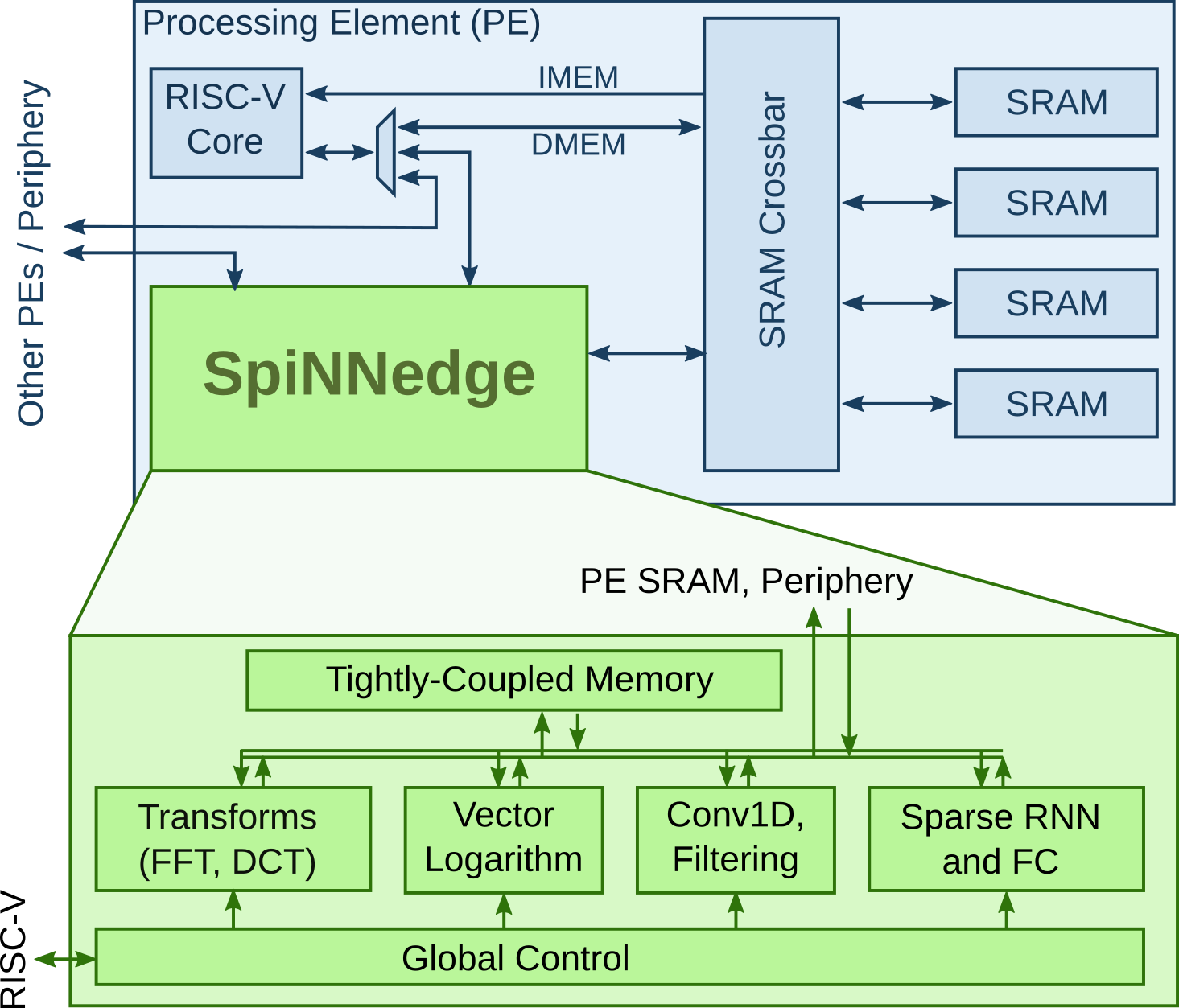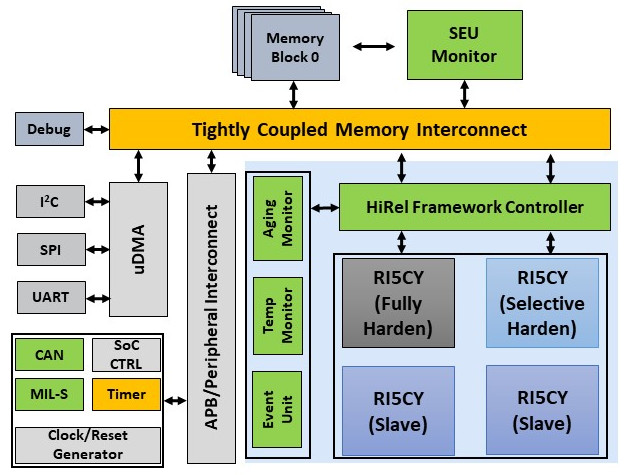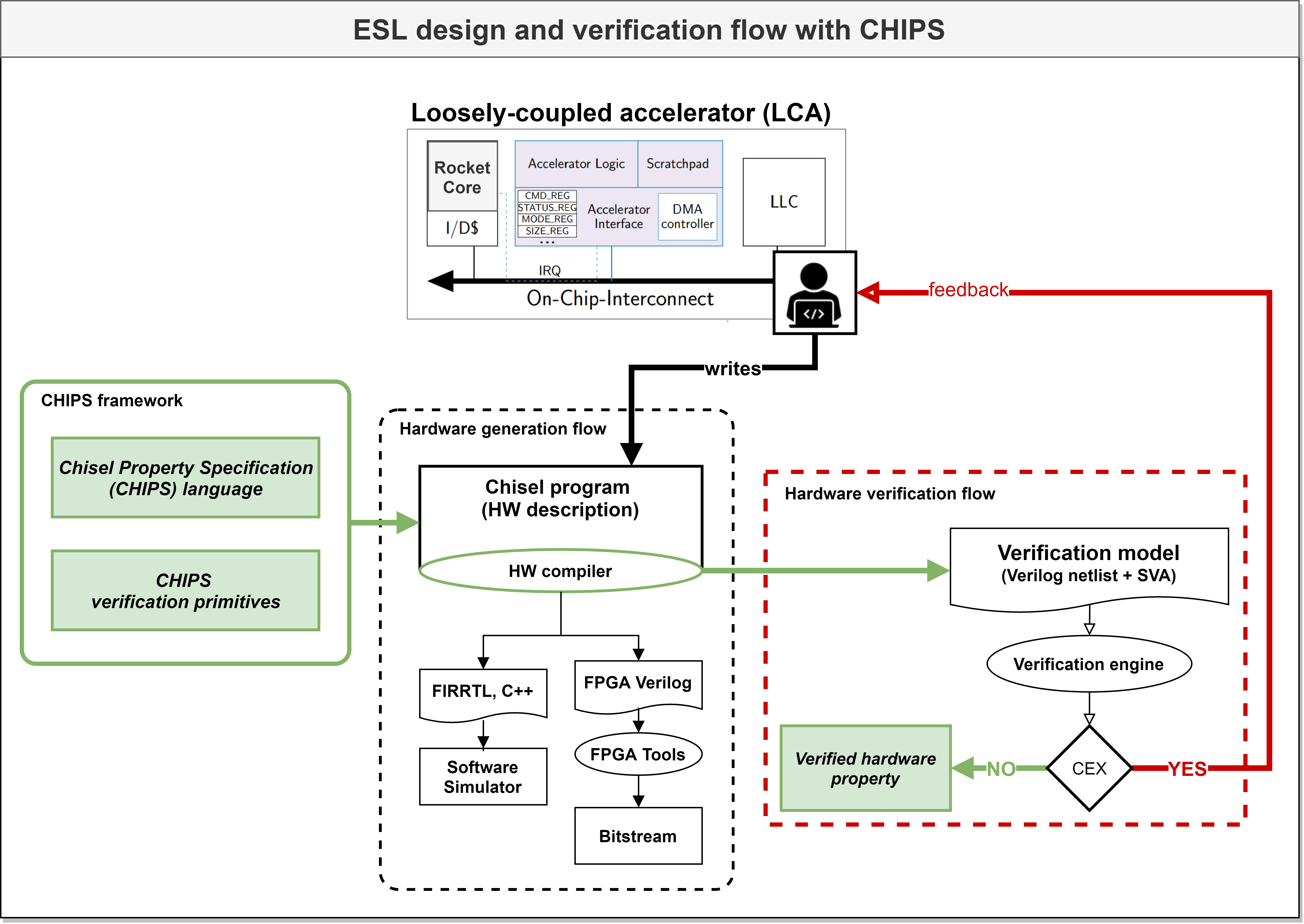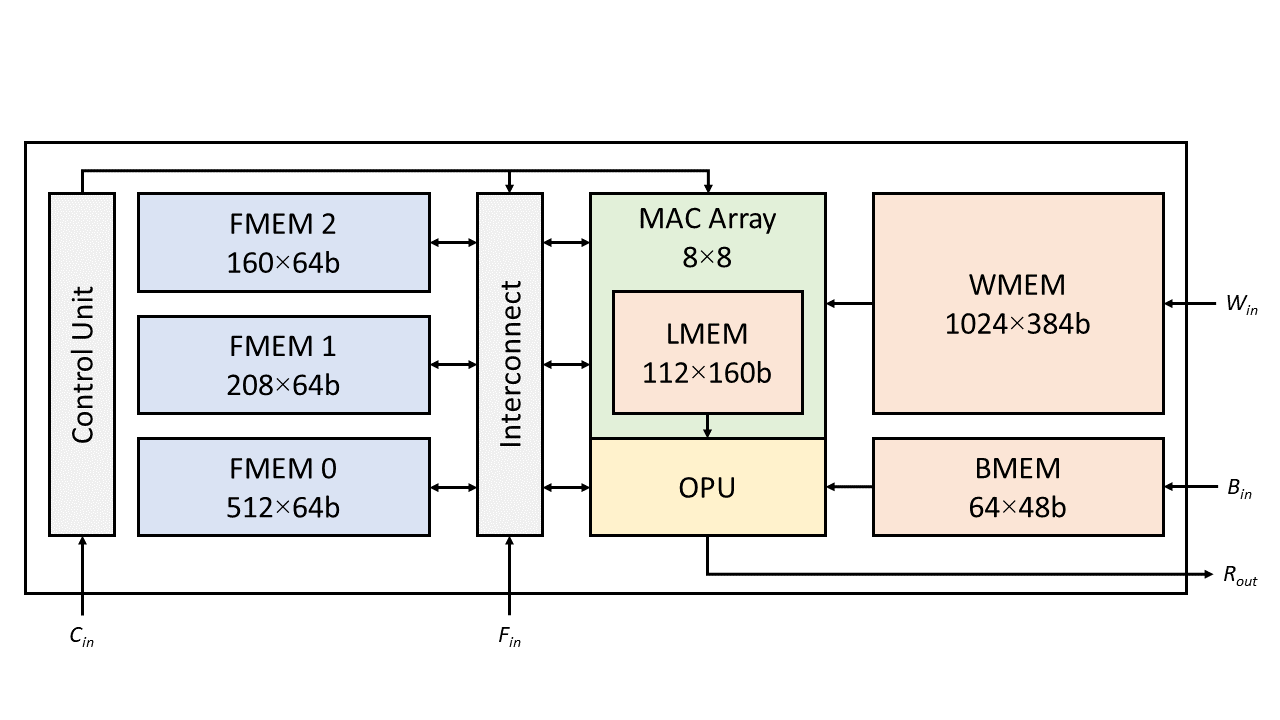SpiNNedge DSP/AI Accelerator
The SpiNNedge accelerator is designed for ultra-low-power processing and classification of time series from sensors in real time. It combines DSP functions for data preprocessing and feature extraction (frequency transforms, windowing, filtering, logarithm) with classification based on recurrent neural networks (RNN). The RNN module exploits sparsity for significantly reduced storage and processing effort. The accelerator performs individual processing layers autonomously. Complex layers can be flexibly assembled from base operations via a global control module.
HighRel Multiprozessor
The HighRel Multiprocessor is a Pulpissimo-based quad-core processing system that is specifically built to withstand the harsh environments as they occur in avionics or astronautics. Based on the required processing power as well as different health and environmental monitors, the system is able to autonomously configure itself to various states of fault tolerance (DMR, TMR or QMR) or performance (low power or high performance).
CHIPS Verification Framework
The CHIPS Verification Framework is a collection of tools and libraries for (formal) hardware design verification. The framework encompasses two subprojects:
CHIPS: Chisel Hardware Property Specification Language
The foundation of the CHIPS-VF is a domain-specific language (DSL) embedded in Scala that allows the specification of lightweight verification properties on different levels of abstraction using the assertion-based verification paradigm.
UltraTrail - Ultralow-Power AI Accelerator for Edge Devices
UltraTrail is a configurable hardware accelerator for real-time inference of temporal convolutional networks (TCNs) on edge devices. Designed for near-sensor signal processing on energy-constrained platforms it features an optimized dataflow for one-dimensional convolution with a total power consumption in the low microwatt range. The parameterizable architecture combined with a hardware-aware neural architecture search (NAS) allows an automatic generation of domain-specific accelerator instances. Accurate models for power, performance, and area enable a fast design-space exploration.



